Elephant toothpaste is such a fun and easy science experiment for kids. This project requires only a handful of supplies and it can be very colorful—a bonus in my book!
This reaction experiment does require using some chemicals, so it’s best for children in elementary school or older and requires adult supervision.
Elephant toothpaste recipe = hydrogen peroxide + dish soap + yeast dissolved in water. You can add food coloring if you like, or use different sized/shaped bottles.
Related: 3 Ingredient Slime, Bouncy Egg Experiment, and Skittles Experiment.
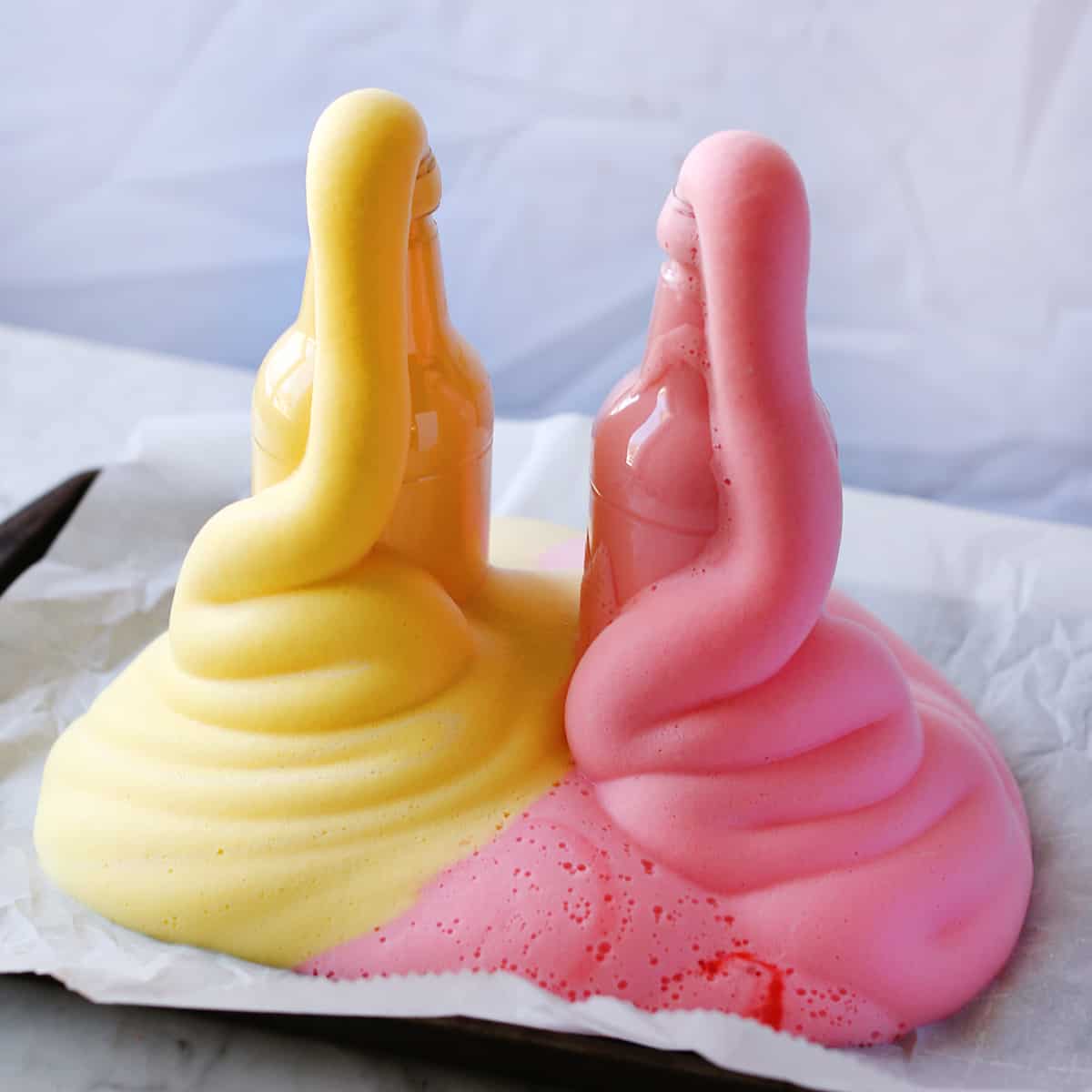
Would you like to save this?
What Do You Learn from the Elephant Toothpaste Experiment?
This kid’s science experiment demonstrates an exothermic reaction.
You could also use this project as an opportunity to have children create a hypothesis and record their observations while testing slightly different amounts of the supplies listed, or using different colored food dyes and see what happens.
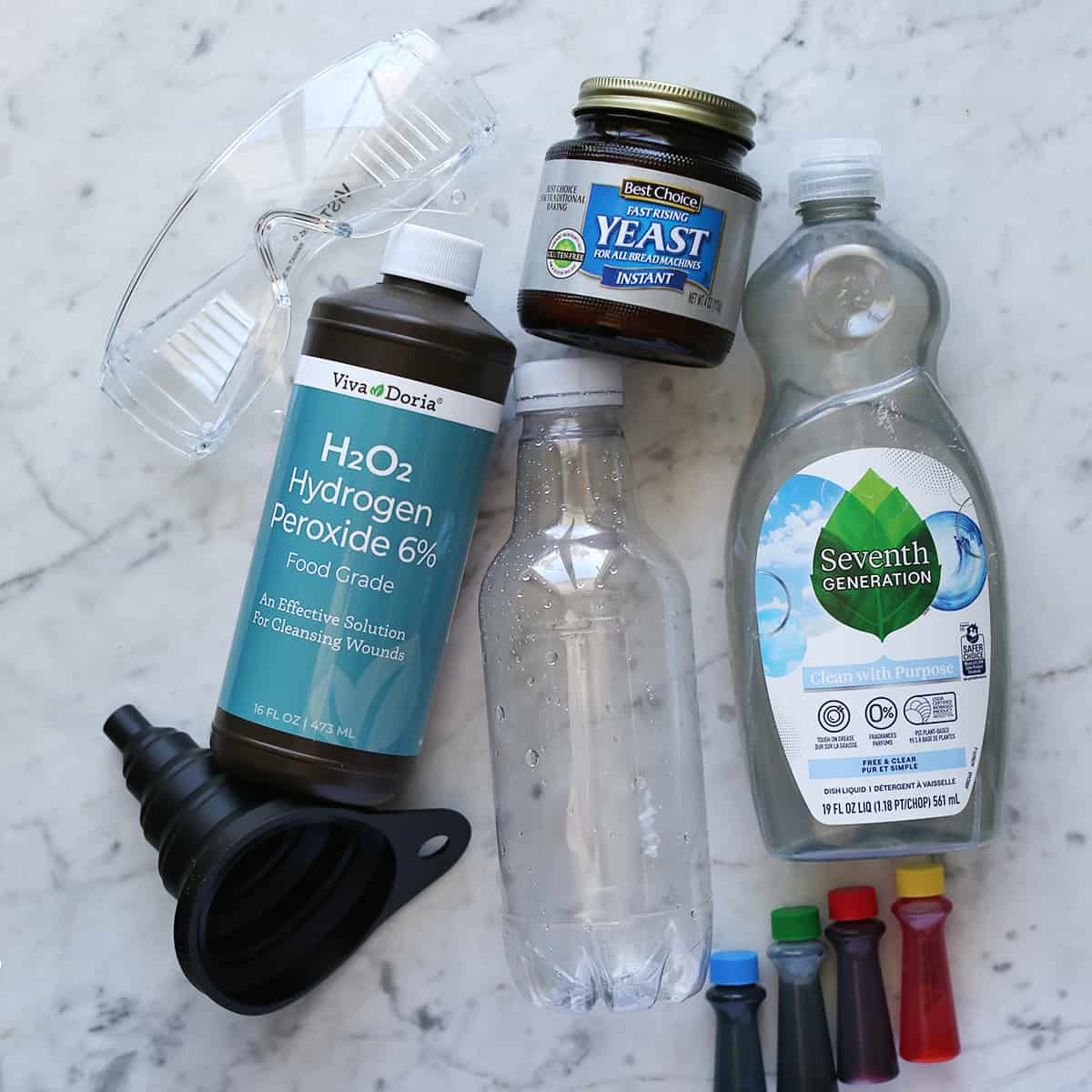
Elephant Toothpaste Supplies:
- 1/2 cup hydrogen peroxide – 6% will have the best results but 3% (more commonly found in pharmacies) will work as well
- Food coloring – optional but fun!
- 1 tablespoon dish soap – any kind/brand of liquid dish soap
- 1 tablespoon yeast – the kind you use for baking
- 2-3 tablespoons warm water
- 16-ounce plastic bottle or other clear container
- funnel & measuring cups/spoons
- safety glasses – just in case the mixture splashes or sputters
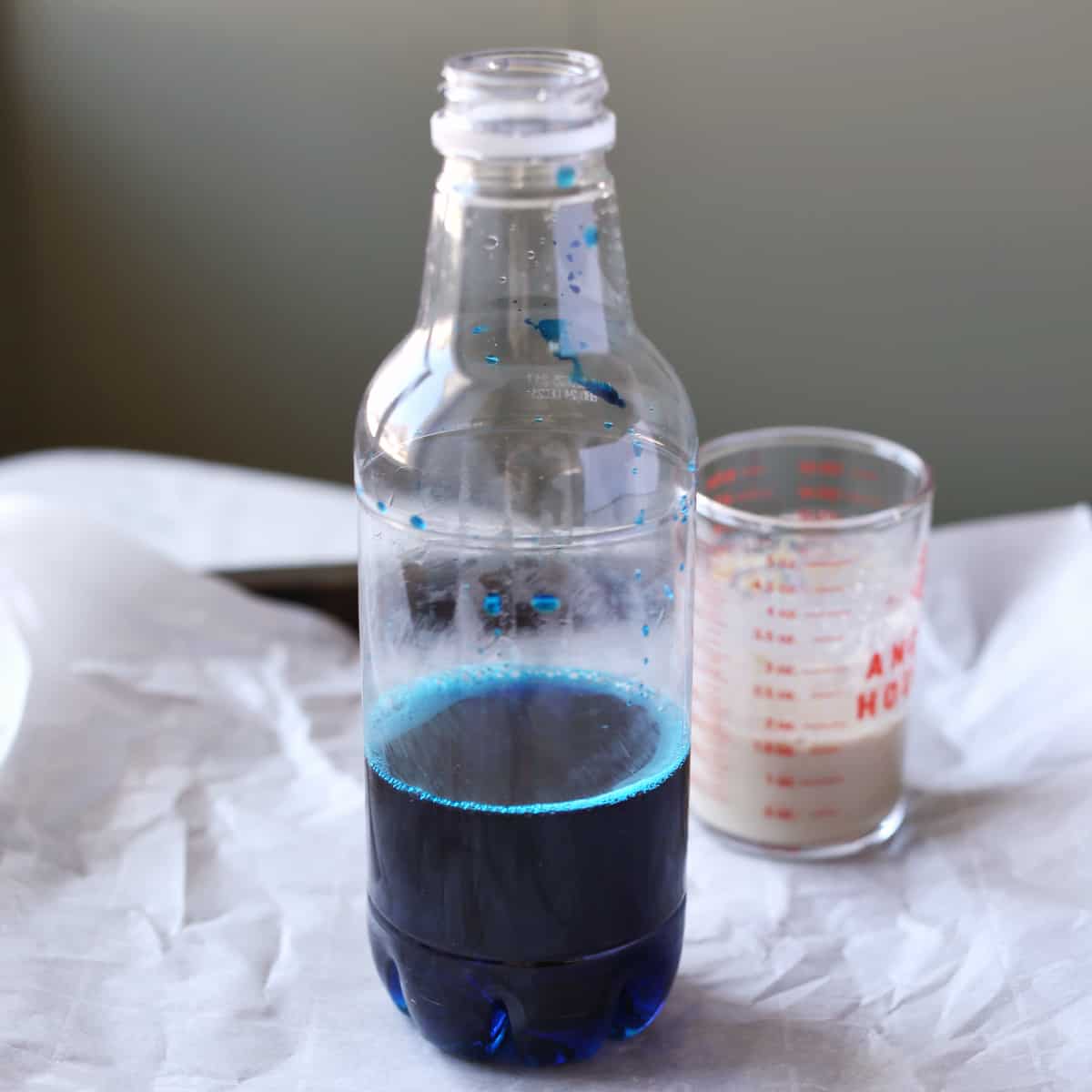
Elephant Toothpaste Steps:
- In your plastic bottle, add the hydrogen peroxide.
- Add in 5-6 drops of food coloring if using. Swirl to mix.
- Add 1 tablespoon of dish soap.
- In a small glass measuring cup or other mixing bowl, combine 1 tablespoon yeast with 2-3 tablespoons warm water and stir. This should get a little foamy after about 30 seconds.
- Pour the yeast water into the plastic bottle. Watch the reaction!
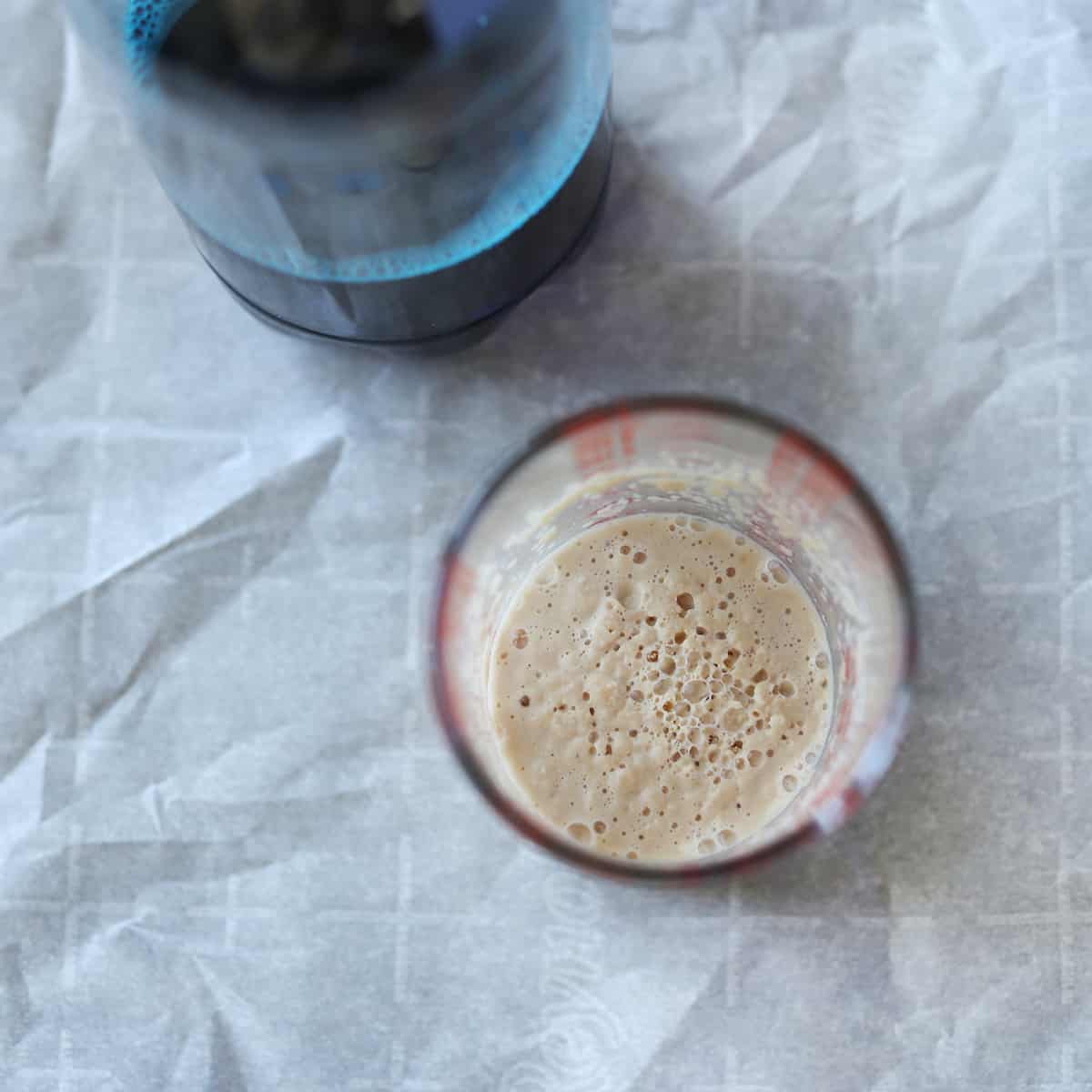
Variations & Other Ideas to Try:
- Use different sized bottles with this recipe and see how the foam flows from each.
- Use a paint brush to paint stripes or other designs in food coloring along the inside of the bottle. The foam will flow out and take on the design.
- Increase or decrease the amount of hydrogen peroxide and see what happens.
- Cover your work surface or do this experiment outside so the foam and food coloring doesn’t stain anything.
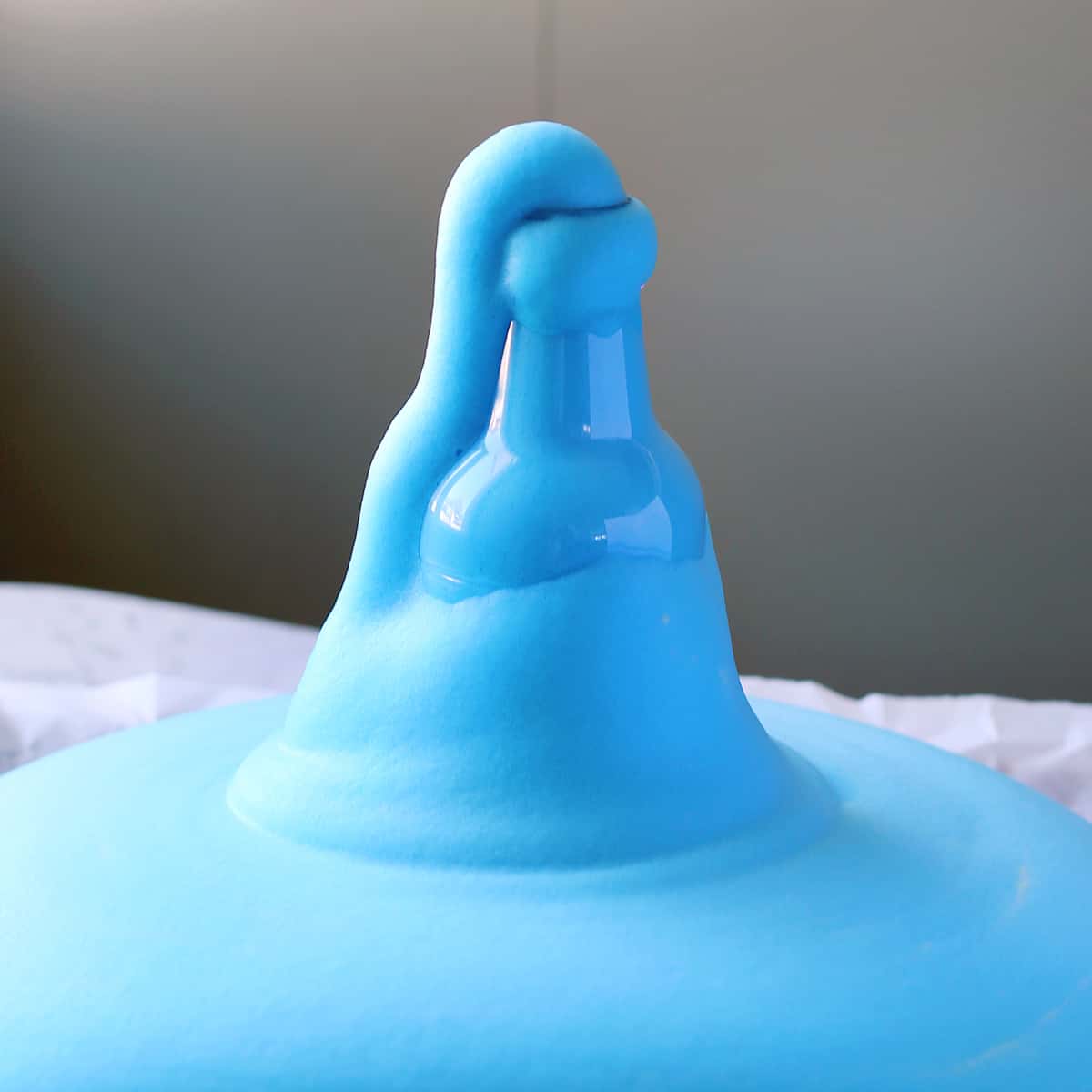
Frequently Asked Questions
Is elephant toothpaste OK to touch?
While it won’t harm you if you accidentally touch elephant toothpaste, you don’t want to leave the residue on your skin and you should take care not to get it in your eyes or mouth.
Hydrogen peroxide is often used to disinfect, clean, and sometimes bleach hair, so take care when using it.
How do you clean up elephant toothpaste?
All the ingredients in this elephant toothpaste recipe can be safely poured down the drain afterward. The main thing you want to take care of is getting food coloring on clothes or surfaces it may not come out of.
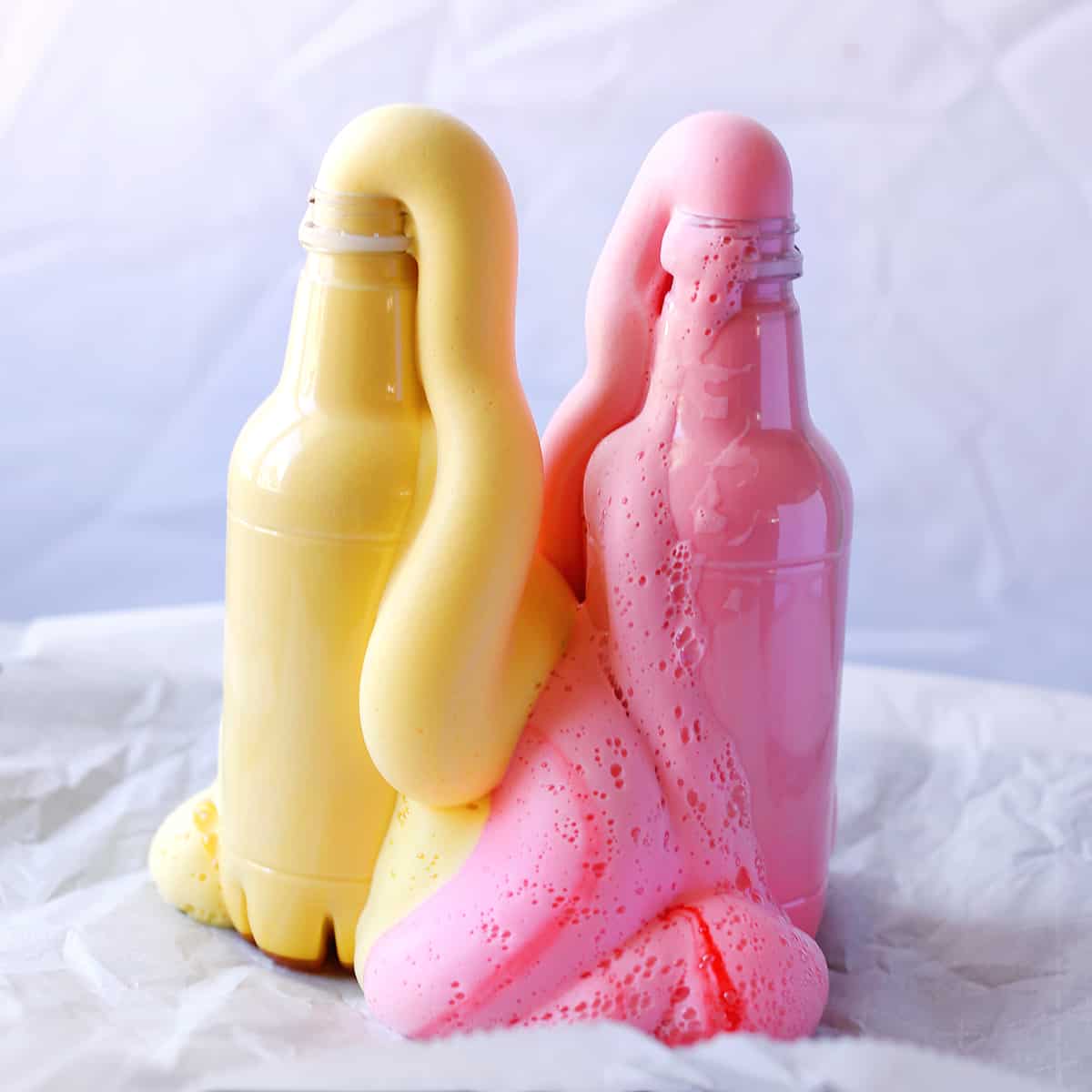
Get creative ideas for recipes, crafts, decor, and more in your inbox!
 Get the How-To
Get the How-To
Supplies
- ½ cup hydrogen peroxide (6%)
- 5+ drops food coloring
- 1 tablespoon dish soap
- 1 tablespoon yeast
- 2-3 tablespoons water (warm)
Instructions
- In your plastic bottle, add the hydrogen peroxide.
- Add in 5-6 drops of food coloring if using. Swirl to mix.
- Add 1 tablespoon dish soap.
- In a small glass measuring cup or other mixing bowl, combine 1 tablespoon yeast with 2-3 tablespoons warm water and stir. This should get a little foamy after about 30 seconds.
- Pour the yeast water into the plastic bottle. Watch the reaction!


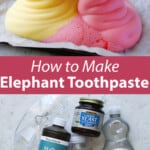

I can’t wait to try this with my students! Thank you so much!